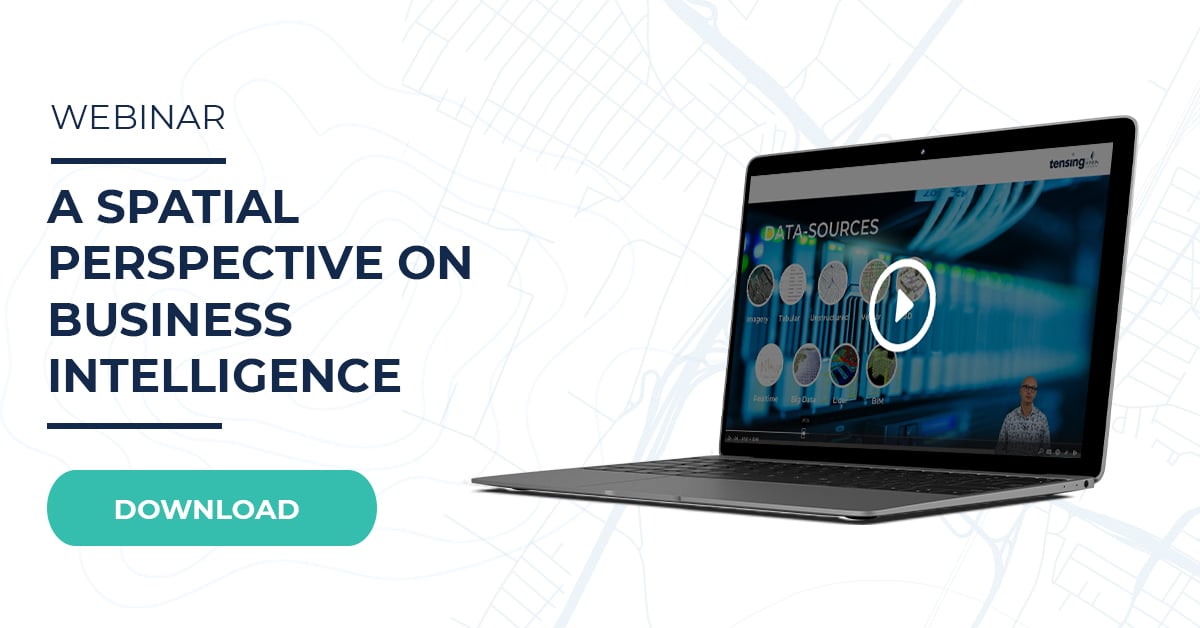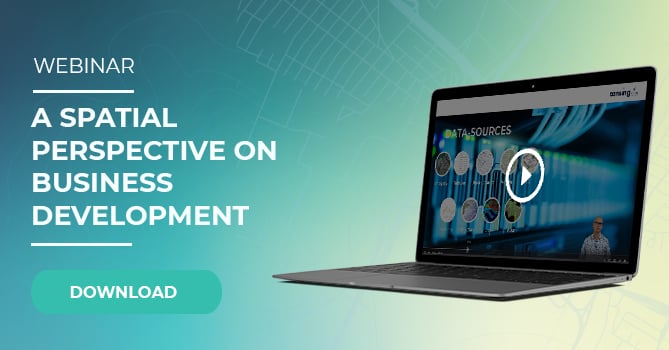The importance of Spatial Analytics

Thom Leeffers
Managing ConsultantGeospatial analytics are analytics involving a question around spatial data and can be very valuable for your organization. Data visualized on maps improves collaborations, makes decision making better and easier, saves costs and streamlines processes. That is quite something!
But what exactly do we mean by geospatial analytics? In this article I will explain that to you.
The easiest question to think of is “where?”. To bring it back to situations recognizable for everyone, it concerns questions like ‘where did I park my car?’, ‘where is the nearest supermarket?’ or ‘where do they have the best pizzas?’. However, spatial analytics are not limited to the question of “where”. And since around 80% of data has a location component, there are probably many questions you can ask which can be answered by spatial analytics, maybe it leads you even to a hidden treasure location.
To make it clear what Geospatial Analytics can offer for your organization, let’s take a trip with Anna, who started a restaurant a year ago and wants to bring her restaurant to a next level, by taking geospatial data to the next level. The different levels of the Geospatial Maturity Index are explained in this blog article and the webinar 'A Spatial Perspective on Business Intelligence'. 
Give it a location and put in on a map
Anna has many guests signed up for her newsletter and they filled in their addresses when they signed up for the newsletter. By using a geocoding service, she can add XY-coordinates to the addresses. Now she is able to put the coordinates onto a map, and as she expected many people signed up for the newsletter life near the restaurant, but she also sees some clusters in other areas of the city. Since the people living further away are less likely to pop in spontaneously, she wonders if it would be interesting to start a delivery service.
Routing
She sets for herself some requirements, like the traveling distance for the delivery should be maximal 20 minutes. Her next questions is how many addresses of the people receiving the newsletter are within 20-minute driving distance? And would it be possible to find an optimal route to deliver to multiple addresses on the same route? With a spatial analysis she finds out that she can deliver to the cluster areas of guests within 20 minutes, and that when she has multiple guests in different clusters, there is even an optimal route, so she can still deliver within 20 minutes, even to multiple guests in living in different areas.

Combine data and find patterns
She figures that if she would only deliver to the people receiving the newsletter, that it would not be financially interesting to set up a delivery service. Since her guest appear to live in certain areas, she wonders if her guests can be related to certain demographics. On the map she adds data around demographics, provided by an external party, and sees directly that there is a relation between age and income and the guests she has. Adding the layer of the maximum delivery distance, she finds out that there is a neighborhood which has the same demographics as most of her guests, but where she has almost no subscribers to her newsletter. She decides to start a marketing campaign for her starting delivery certain in the areas with the right demographics within delivery distance, and with an extra focus on the neighborhood where she has almost no subscribers yet.
Location scenario’s
After a year she started with the delivery service, business is booming and she can think about starting another location. But what should she do? Start a restaurant at the other side of the city? Or start in a completely new city? She starts again by setting some requirements for herself. She wants to reach people who are currently not within delivery distance and there should be no overlap in the delivery areas. Also, she wants the restaurant to be in a neighborhood containing many people matching the demographical picture of her guests, and at least three other hot spots in the delivery area. By creating location scenarios on the map based on her requirements she finds out that there is a near city with the best business opportunity and she decides to start a new restaurant in that city.
What could it mean for you?
These examples show how Anna uses Geospatial Analytics, leveraging data owned by her restaurant and external data. And it is a simplified example, your organizations have probably more data silos, but it shows clearly what the benefit is of spatial data. And it is not limited to those examples, you can add the component of time, 3D and realtime sensor data. In example to create a real time operational picture of a plant, of a logistic proces, assets management or operators in the field. The next level would be to use Data Science.
And as in the case of Anna, value is created by combining spatial data with other business data. And in our experience this is the case for many organizations. But where to start with your organization? The first step is to find out where spatial analytics could offer you the most ROI. Which challenge is current and could be solved with the help of spatial analytics, what will create the map to your hidden treasure?



.png)
